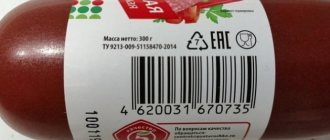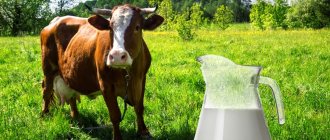State registration of the RosTestStandard certification system in the Federal Agency ROSSTANDART registration number ROSS RU.Z1527.04IZhRO
ROSTESTSTANDARD
Certification of products in the RosTestStandard center is carried out for compliance with technical regulations and established State safety and quality standards, we advise who issues, where and how to obtain, issue: a certificate of conformity, declarations of conformity, a certificate of state registration of products and a fire safety certificate. We determine exactly which of the above-mentioned permits is required to be issued according to the list of products subject to mandatory certification in the territory of the Customs Union (EAEU) or declaration of conformity.
STATE CERTIFICATION: 8 (800) 200-87-81 FREE CALL
| • Home | • Services | • Certificate of conformity | • Declaration of conformity | • To the manufacturer | • To the importer | • Technical regulations | • Commodity Nomenclature of Foreign Economic Activity of the EAEU | • Contacts |
| To the contents of the Commodity Nomenclature of Foreign Economic Activity As amended from 09/01/2013 |
HS code database
7018 - Glass beads, items imitating pearls, precious or semi-precious stones and similar small glass forms, items made from them, except costume jewelry; glass eyes, except for prostheses; figurines and other decorative glass items processed with a blowtorch, except for jewelry; glass microspheres with a diameter of no more than 1 mm:
| 7018 | Glass beads, products imitating pearls, precious or semi-precious stones and similar small forms made of glass, products made from them, except costume jewelry; glass eyes, except for prostheses; figurines and other decorative glass items processed with a blowtorch, except for jewelry; glass microspheres with a diameter of no more than 1 mm: |
| 7018 10 | - glass beads, items imitating pearls, precious or semi-precious stones and similar small glass forms: |
| — — glass beads: | |
| 7018 10 110 0 | — — — cut and polished mechanically |
| 7018 10 190 0 | - - - others |
| 7018 10 300 0 | — — products imitating pearls |
| - - products imitating precious or semi-precious stones: | |
| 7018 10 510 0 | — — — cut and polished mechanically |
| 7018 10 590 0 | - - - others |
| 7018 10 900 0 | - - others |
| 7018 20 000 0 | — glass microspheres with a diameter of no more than 1 mm |
| 7018 90 | - other: |
| 7018 90 100 0 | - - glass eyes; objects in the form of small glass forms |
| 7018 90 900 0 | - - others |
This heading covers a number of very different glass products, most of which are used directly for their intended purpose or after further processing for decorative purposes.
This includes:
(A) Glass beads (for example, used in necklaces, rosaries, artificial flowers, grave decorations, etc., for textile decoration (trimming, embroidery, etc.), in handbag decoration, etc. , or used as an electrical insulator). These beads, colored or undyed, have the appearance of small grains of more or less round shape with a through hole; they are made by cutting glass tubes into pieces of approximately equal length and diameter. The resulting small cylinders are then placed along with a mixture of powdered substances (charcoal, graphite, gypsum, etc.) into a metal drum rotating over a forge. The glass cylinders are softened by heat, frictional forces with the drum wall give them a more or less spherical shape, and powdery substances prevent them from sticking to each other.
(B) Imitation pearls, solid or hollow, of any shape or size, imitate real pearls. The most common hollow pearls are made by blowing thin glass spheres from a very small diameter glass tube and then separating them from each other. Thanks to the manufacturing method used, these pearls have two holes located opposite each other through which a thread can be threaded. Hollow pearls can also be blown from a glass rod. Then a substance containing pearl essence (a paste-like substance from the scales of certain types of fish dissolved in ammonia) is blown into the glass spheres; sometimes they are filled with white wax to increase durability. Cultured pearls are easily distinguishable from real pearls due to their light weight and the fact that they break into pieces under even very slight pressure.
Solid artificial pearls are obtained by turning a glass droplet on a copper wire in a flame, or by casting glass in small furnaces with a thin copper tube installed transversely. After cooling, the metal dissolves in nitric acid, the acid has no effect on the glass, and a hole along the diameter is formed in the pearls. They are then coated with pearl essence, followed by a protective layer of clear varnish.
(B) Artificial gemstones (including artificial semi-precious stones made of glass) are not to be mixed with artificial and regenerated gemstones of heading 71.04 (see relevant explanatory notes). These artificial stones are made from special glass (such as rhinestones) that has a high refractive index. This glass can be colorless or colored with metal oxides.
Artificial stones are usually obtained by cutting pieces of the required size from a glass block. These fragments are then placed on a metal sheet covered with tripoli and placed in a small forge, where their edges are rounded. Then the resulting stones can be cut (for example, shaped into diamonds and diamonds), engraved (to produce cameos or intaglios). Such stones can also be obtained directly by casting (for example, to make stones of certain shapes for key chains). The reverse side of such stones is often coated with shiny metallic paint.
(D) Other similar glass products such as artificial coral.
(E) Various glass products (other than artificial jewelry) obtained by combining some of the above-mentioned products, for example, flowers, foliage designs, beaded designs for wreaths, beaded or bugle borders for lampshades, shelves, etc., curtains and drapes of bugles and beads, the same napkins; rosary made of glass beads and artificial precious and semi-precious stones.
(E) Glass eyes (other than human prosthetics (heading 9021)), intended, for example, for dolls, robots, stuffed animals. However, eyes are excluded for dolls with a mechanism that covers the eyes (heading 95.02).
(G) Figurines and other decorations (except artificial jewelry) are produced by blowing from glass in a plastic state. These products are intended for decorating rooms (animal figures, images of plants, figurines, etc.). They are usually made from clear glass (crystal, rhinestone, etc.) or "enamel" glass.
(3) Glass microspheres with a diameter of not more than 1 mm are used for the manufacture of traffic sign panels, reflective signs and movie screens, for cleaning aircraft jet engines or metal surfaces. These are solid products with a perfectly spherical shape.
Excluded from this heading are flowers, leaves and fruit (for interior decoration, etc.) cast in glass (heading 7013). Baubles made of blowtorched glass incorporating precious metal, or base metal coated with a layer of precious metal in an amount greater than the minimum finishing, or containing artificial jewelry, as specified in Chapter , are included in Chapter .
This heading also does not include:
(a) Glass powder, often silvered or colored, for decorating cards, Christmas tree decorations, etc. (heading 3207).
(b) Handbags and similar articles of leather or cloth, adorned with glass beads, imitation pearls or imitation jewels and semi-precious stones (heading 42.02).
(c) Picture cards, Christmas cards, etc., covered in glass (heading 49.09).
(d) Textiles with appliques of glass beads (section and, in particular, heading 58.10).
(e) Fabrics coated with glass microspheres for movie screens, etc. (heading 5907).
(e) Shoes, hats, canes and umbrellas, decorated with glass beads, artificial pearls, artificial precious and semi-precious stones (groups, and).
(g) Imitation pearls, imitation precious and semi-precious stones set in precious metal or in base metal covered with a layer of precious metal (heading 7113 or 7114), and imitation jewelry of heading 7117 (see relevant explanatory notes).
(h) Cufflinks (heading 7113 or 7117).
(i) Toys, games, Christmas tree decorations (including thin-walled balls) (group).
(k) Buttons and cufflinks of heading 96.06 or group ).
Explanations for subheadings
7018 10 110 0 and 7018 10 190 0
These subheadings cover:
1. products specified in the HS explanations for this heading, second paragraph, paragraph (A);
2. Similar products, known to consumers as “glass beads,” are large beads (approximately the size of a walnut). These products, intended mainly for the manufacture of necklaces and bracelets, are given a wide variety of shapes (spherical, hemispherical, teardrop-shaped, cubic, cylindrical, tubular, cone-shaped, multifaceted) and through holes are made in them.
Tubular beads are considered to be glass beads for the purposes of these subheadings only if their outer diameter and length do not exceed 4 mm and 24 mm respectively. They should not be confused with the special standard lead glass tubes used in the manufacture of incandescent lamps; tubes of this type are generally colorless and are classified in heading 70.02.
Products included in these subheadings are usually stored in bulk, in bags, boxes, etc.
These subheadings also apply to glass beads of the same size and color, strung on threads without separating knots or fasteners, for ease of transportation and packaging. Such threads are usually bundled by the loose ends and are therefore not finished products.
The following products are excluded from these subheadings:
(a) Strings of beads (including bundles) on which beads of different sizes and colors are arranged in a specific order (for example, alternating in a specific order of color and size or placing in ascending order of size) or separated by knots (heading 7117).
(b) Strings of beads (including beads of the same size, color and type), fitted with clasps and similar devices, or of a short length, suitable for wearing as necklaces (heading 71.17).
7018 10 110 0
Faceted and mechanically polished beads classified in this subheading differ from burnished beads (subheading 7018 10 190 0) in that they have completely smooth surfaces and sharp edges. In this case, the edges of through holes are often faceted (and sometimes polished) and have sharp edges, the edges of which coincide with the neighboring ones; When polishing by reflow, the edges of through holes are, as a rule, rounded and do not form sharp corners with the edges.
As a rule, the products specified in the first paragraph of paragraph (2) of the explanations to subheadings 7018 10 110 0 and 7018 10 190 0 undergo cutting and mechanical polishing.
7018 10 300 0
This subheading covers the products described in the HS Explanatory Notes to this heading, second paragraph, (B).
Explanations to subheadings 7018 10 110 0 and 7018 10 190 0 apply mutatis mutandis to strings of artificial pearls.
7018 10 510 0 and 7018 10 590 0
These subheadings cover the products described in the HS Explanatory Notes to this heading, second paragraph, (B).
7018 10 510 0
Faceted and mechanically polished artificial precious and semi-precious stones belonging to this subheading differ from similar fusion polished products of subheading 7018 10 590 0 in that they have completely smooth surfaces and sharp edges.
7018 10 900 0
This subheading applies to artificial corals, beads and cabochons (other than artificial pearls and artificial precious and semi-precious stones) for hat pins and earrings, and thin glass tubes for finishing edges.
As for the difference between thin glass tubes included in this subheading and glass bead tubes of subheadings 7018 10 110 0 and 7018 10 190 0, see the second paragraph of the explanations to these subheadings.
7018 20 000 0
This subheading applies to the products described in the HS Explanations to this heading, second paragraph (3).
7018 90 100 0
See the HS Explanations for this heading, second paragraph (D) and (F).
7018 90 900 0
This subheading applies to the products described in the HS Explanation to this heading, second paragraph (G).
The largest buyers of Russian flat glass
We have prepared a list of companies where you can sell sheet glass. These are the largest importers purchasing their products from the CIS countries.
- IMAGE GLASS SUPPLY LTD (TRADING AS INTERNATIONAL GLASS SUPPLY): TEMPERED GLASS, UNCOATED, UNENAMELED, UNREINFORCED, SHEET, NOT FOR USE IN VEHICLES, CONSTRUCTION, MM THICK. GOST-. MARKING: QTY. M, SIZE, WEIGHT
- EDEN KNALLS GREENHOUSE LTD: NON-GREENHOUSE GLASS, UNPAINTED, TRASHED, SHEET, NON-OPTICAL, CONSTRUCTION GLASS, MM THICKNESS PER INDIVIDUALS. PACKAGING “HALLS X” -. M. GLASS MM UNIT. PACKING "FT"-. M; GLASS MM CUTTED -. M. GOST
- VAN LOUWEREN NV: NON-GREEN GLASS, UNPAINTED, DRAWN, SHEET, NON-OPTICAL, BUILDING GLASS, MM THICK, CUTTED-. M, INDIVIDUALLY PACKED -. M. GOST -. MARKING: QTY. M, SIZE, WEIGHT, AMP NO. OF PACKAGES. TARE
- PRIVATE ENTERPRISE A.I.R: ORGANIC GLASS (POLYMETHYL METHACRYLATE SHEET) GRANDS ACRYLIC S, MM-SHEET. THAT -; ACRIMA WITH MM-SHEETS; ACRIMA O MM-SHEETS. (MMMM); AKRIMA O. MM-SHEET(MMMM
- PE CASCADE - PLASTIC: ORGANIC GLASS (POLYMETHYL METHACRYLATE SHEET) BRAND: ACRYMA C., MM-SHEET. COLORLESS; ACRYMA OH MM-LEAF. OPAL. (MMMM) TOTAL AREA. M. KV. ACRYMA C, MM-SHEETS. TOTAL AREA. M. KV. THAT
- LLC HGC FLAT GLASS UKRAINE: STOPSOL PHOENIX GLASS TRANSPARENT MM, UNREINFORCED, SHEET, POLISHED, HARD COATED, SUNPROOF, IN SHEET SIZE. MMM. CM. ADDITION GLASS, FLAT, SHEET, POLISHED, HARD COATED, SUN SHIELD
- WILHELM PFEIFFER GMBH: NON-GREEN GLASS, UNPAINTED, DRAWN, SHEET, NON-OPTICAL, BUILDING GLASS, MM THICK, CUT TO SIZE -. M, INDIVIDUALLY PACKED -. M. GOST -. MARKING: QUANTITY, M, SIZE, WEIGHT, AMP M ON THE PACKAGING CONTAINER
- LLP GLASS - SERVICE: SHEET GLASS, UNREINFORCED, POLISHED, HAVING AN ABSORBING LAYER (MAGNETRON SPRAYING IN VACUUM), MM THICKNESS: REFLECTIVE GLASS DBL- MM X, M, REFLECTIVE GLASS DBL- MM X, M
- GLASS CENTER LLC KHARKOV: POLISHED UNREINFORCED SHEET GLASS WITH LOW-EMISSION SOFT COATING: GOST R, GRADE I, SIZE, MM, M (SHEETS)' POLISHED UNREINFORCED SHEET GLASS WITH MULTIFUNCTIONAL SOFT COATING MF-NEUTR
Permits for export of flat glass
If you are a manufacturer, we will help you prepare the necessary documents for exporting flat glass to the EU, CIS, ASIA, AFRICA or AMERICA.
- constituent papers of the exporting organization;
- foreign economic agreement or you can order the execution of the agreement;
- transaction passport for the contract amount over $50,000;
- invoice for cargo with the exporter's stamp;
- invoice with data on the weight and quantity of goods;
- transport documents;
- certificate or passport for goods;
Customs payments and VAT payment
When exporting sheet glass, you will not pay the VAT rate to the budget. The price for the client is 20% VAT.
VAT rate: 0%
Export payments: 0%
Excise tax: 0%
Payment for export Flat glass from Russia 0%
When exporting, you can also apply for a VAT refund. To do this, when selling sheet glass, it is necessary to prepare a set of all necessary documents. We can help sell your products in the countries of the Customs Union and APEC
When importing (importing) into another country, you will need to pay a tax, similar to VAT. Let's say in the EU this is VAT. IMPORT VAT: 20%
Problems of control of the classification code of flat glass according to the Commodity Nomenclature of Foreign Economic Activity of the Customs Union
- Analysis of the practice of declaring sheet glass
When passing customs control, a participant in foreign economic activity is obliged to provide the customs inspector with a customs declaration, which will indicate reliable information about the product and its classification code according to the Commodity Nomenclature of Foreign Economic Activity of the Customs Union.
In turn, the customs inspector checks the correctness of the declaration of goods in accordance with the Commodity Nomenclature of Foreign Economic Activity of the Customs Union and either agrees with the proposed product code, or does not agree and determines the appropriate product code. If the information provided is insufficient to determine the product code according to the Commodity Nomenclature of Foreign Economic Activity of the Customs Union, the customs inspector can contact the declarant directly or, if necessary, an expert. Examples of the practice of declaring sheet glass are given in Table 2 [5]. Table 1
Examples of declaration of sheet glass
| № | Description of the product in column 31 of the TD | Claimed code | Control result | Questions for the declarant | Questions to the expert |
| 1 | 2 | 3 | 4 | 5 | 6 |
| 1 | Window sheet glass with a polished surface, unreinforced, unpainted, without additional layers (absorbing, reflective) for construction work, 4 mm thick, GOST 111-2001 | 7005293500 | This code is correct | ||
| 2 | Cast sheet glass, not processed, not reinforced, not having an absorbing and reflective layer, unpainted, for construction and finishing works | 7003199000 | This code is correct | ||
| 3 | Sheet glass (float), colorless, non-reinforced, thermally polished with a polished surface, having an absorbing and reflective layer | 7005103000 | There is not enough information to determine the HS code | What is the thickness of the glass? | |
| 4 | Transparent sheet glass: polished, unreinforced, without an absorbent or reflective layer, unpainted, 10 mm thick, size: 2134x3300mm-216 | 7005298000 | This code is correct | ||
| 5 | Sheet glass processed by chemical etching, not inserted into a frame and not combined with other materials, is used for glazing | 7006009000 | This code is correct | ||
| 6 | Sheet glass size: 100*60*1cm-10pcs. use in construction for glazing. buildings. | 7004909200 | There is not enough information to determine the HS code | Is reinforced or non-reinforced glass presented for decoration? | |
| 7 | Non-greenhouse glass, unpainted, drawn, sheet, non-optical, construction glass, 3 mm thick in a single package of the COMPAKT 3.1,10 LUNA model. GOS | 7004909800 | This code is correct | ||
| 8 | Sheet glass, polished, green, 2.2 mm thick, size 321*225 cm, 7537.68 m2, 1044 pieces, 18 boxes. | 7005212500 | There is not enough information to determine the HS code | Is reinforced or non-reinforced glass presented for decoration? | |
| 9 | Sheet polished unreinforced glass, colorless, 1.8mm thick, size 813mmX711mm. 22 wooden boxes / 7260 sheets | 7005292500 | This code is correct | ||
| 10 | Sheet glass, cut, not optical, not inserted into a frame, and not combined with other materials | 7006009000 | This code is correct |
From the data in Table 1 it follows that the main violations when declaring sheet glass were incomplete data on the presence of a reinforced layer of glass, as well as incomplete data on the thickness of the glass.
The consequences of incorrectly determining the product code for the Russian economy are quite serious, because In accordance with the product code, customs duties are assessed, the proceeds of which go to the state treasury.
- Ways to minimize customs risks when controlling the classification code of flat glass according to the Commodity Nomenclature of Foreign Economic Activity of the Customs Union.
In customs practice, customs authorities and participants in foreign trade activities experience difficulties in determining the method of production of glass and products made from it.
In the HS CU, sheet glass is classified in Section XIII “Products made of stone, gypsum, cement, asbestos, mica or similar materials; ceramic products; glass and products made from it”, in group 70 “Glass and products from it”, where it occupies four product positions:
- 7003 - glass, cast and rolled, sheet or profiled, with or without an absorbent, reflective or non-reflective layer, but not otherwise treated;
- 7004 - drawn and blown glass, in sheets, with or without an absorbent, reflective or non-reflective layer, but not otherwise processed;
- 7005 - thermally polished glass and ground or polished glass, in sheets, whether or not having an absorbent, reflective or non-reflective layer, but not otherwise treated;
- 7006 - Glass of heading 7003, 7004 or 7005, bent, cut, etched, drilled, enameled or otherwise worked, but not framed or combined with other materials [6].
By analyzing the text of the Customs Code of Foreign Economic Activity, it is possible to identify classification characteristics of glass at different levels of detail.
At the product item level, such features are:
- — method of producing glass (cast, rolled);
- — type of processing (presence of an absorbing, reflective or non-reflective layer).
At the subitem level
- presence of reinforcement (reinforced and non-reinforced sheets).
Subheadings:
- type of finishing (painted, die-cut sheets);
- glass thickness.
It should be noted that regardless of the level of detail of the commodity items, the import customs duty rate is the same and amounts to 15%.
The difficulties that customs authorities experience during customs control of sheet glass are associated in most cases with unreliable declaration of goods and underestimation of the declared weight.
The classification of sheet glass is based on its manufacturing technology. Glass of heading 7003 is mainly imported into Russia. However, rolled unprocessed glass is practically not used for glazing window and door openings: it is opaque due to its rough surface and, as a rule, is subjected to further processing. This circumstance indicates that unprocessed rolled glass of commodity item 7003 of the HS HS is not imported into Russia. In fact, instead of the declared rolled glass, polished glass (colorless, decorative, tinted) and drawn glass is imported, commodity items 7004, 7005 of the CU HS.
Unlike rolled glass, drawn unpolished clear glass is imported from China and used for glazing window openings. However, it is practically not used for the manufacture of double-glazed windows; mass-painted glass is made exclusively polished. This circumstance allows us to assert that the volume of imported glass of this type is significantly overestimated. Here the situation is aggravated by the fact that visually during customs inspection it is impossible to distinguish unpolished drawn glass from polished glass.
Mostly, instead of the declared colorless drawn glass, thermally polished colorless glass (commodity item 7005) is imported. This entails a shortfall in customs payments due to differences in the customs value of the goods.
At the current stage of development, Russia is beginning to take the first steps to save energy resources. A striking example of this is the Federal Law of the Russian Federation No. 261-FZ, adopted on November 23, 2009, “On energy saving and increasing energy efficiency and on introducing amendments to certain legislative acts of the Russian Federation” [10]. In this regard, it is necessary to highlight the problem when classifying the new, but quite popular energy-saving sheet glass, because the quantity of its import into the territory of the Russian Federation has rapidly increased, due to its use for the manufacture of double-glazed windows.
Energy-saving glass (I-glass) is glass with a special coating that selectively reflects infrared rays (long-wavelength region of the radiation spectrum) that transfer heat. Since the coating consists of very thin layers sprayed onto the surface of the glass, energy-saving glass changes its transparency to visible light only slightly. Energy-saving glass reflects infrared (thermal) radiation back into the room (see Fig. 5).
The main function of energy-saving glass is its high thermal insulation ability. Energy-saving glass can prevent heat loss caused by ash radiation. Today, not only in our country, but throughout the world there is a problem of energy saving, so many of the largest manufacturers of glass with energy-saving properties have developed and launched their production.
To give the glass energy-saving properties, a special low-emissivity optical coating is applied to its surface. This coating facilitates the penetration of short wavelength solar radiation, but at the same time prevents long wavelength thermal radiation from leaving the room.
Today, energy-saving glass is produced with two types of coating: K-glass (Low-E) - energy-saving glass with a hard coating, in appearance it looks like ordinary glass. The glass coating has a neutral color and has almost no effect on the light transmittance of the glass and its reflection. I-glass (Double Low-E) - energy-saving glass with a soft coating. I-glass is a significant step in the production of glass with energy-saving properties. I-glass is superior in quality to K-glass.
Rice. 5. Operating principle of energy-saving glass
The difference between them lies both in the manufacturing technology and in its ability - emissivity. Compared to K-glass, I-glass has the main disadvantage of low abrasive resistance.
Advantages of energy-saving glass:
- reduces condensation;
- does not interfere with the entry of sunlight;
- the possibility of glazing with two types of glass: energy-saving and sun-protective;
- reduces cold radiation;
- significantly reduces heat losses;
- reduces heating costs;
In a double-glazed window, energy-saving glass is installed on the inside of the room, but in such a way that the coating is directed into the space between the glass. This arrangement helps to heat the surface of the glass from its inside, which will affect the reduction of condensation, which often appears due to temperature changes. A double-glazed window with energy-saving glass ensures comfortable living indoors and also significantly reduces energy costs.
Energy-saving glass has a fairly high price and customs duty, so unscrupulous participants in foreign trade activities, in most cases, try to declare it so that the duty is as low as possible. This often happens because it is impossible to distinguish energy-saving glass from simple glass without the use of special technical means of customs control.
The risks of unreliable declaration of polished tinted glass, polished decorative glass, processed glass, which have a high customs value, are minimized during customs inspection or after the release of goods through a customs audit.
Plate window glass is sold and purchased by the square meter (additional unit of measurement), and customs duties are levied per unit of weight (primary unit of measurement).
The weight of glass is not indicated in shipping documents and is not always indicated on the packaging, so declarants recalculate square meters of glass area into kilograms of weight. The essence of the recalculation is to determine the weight of the glass by multiplying the volume of glass in the shipment by the density of the glass. The volume of glass in a batch is determined based on the linear dimensions of the sheet and the number of sheets stated in column 31 of the customs declaration. Standard sizes of glass imported from China are 1300×900, 1600×1300, 1800×1300, 2000×1500, 2200×1370, 2200×1650, 2440×1370 mm with sheet thicknesses of 3, 4, 5, 6, 8 mm (standard PRC GB11614-1999) [7].
Thus, when converting square meters into kilograms, errors occur that lead to an underestimation of the weight of the goods and, accordingly, an underestimation of customs duties.
In practice, during customs control, a calculation method is usually used to reliably determine the weight of glass. The customs inspection report (ATC) states how the weight is determined. The official conducting the customs inspection determines the weight of the glass based on the linear dimensions of the sheet (length, width, thickness), the number of sheets, the total area of the packaging space, the number of packaging spaces, and the density of the glass. Information about linear dimensions, number of sheets, total area is contained in the marking of the packaging, to which the official makes reference in the act. The number of packaging spaces is counted. The use of this method leads to a reduction in cases of underestimation of the weight of goods.
The risks of inaccurate weight statements are minimized at the stage of documentary control using the calculation method. The initial data for the calculation are the linear dimensions of the sheet and the number of sheets declared in column 31 of the customs declaration, and the density of the glass, documented by the customs department. The calculation method will allow you to avoid customs inspections, prevent underestimation of the weight of goods, give uniformity to the procedure for converting area units into weight units at customs and, as a result, ensure the collection of taxes and duties in full.




